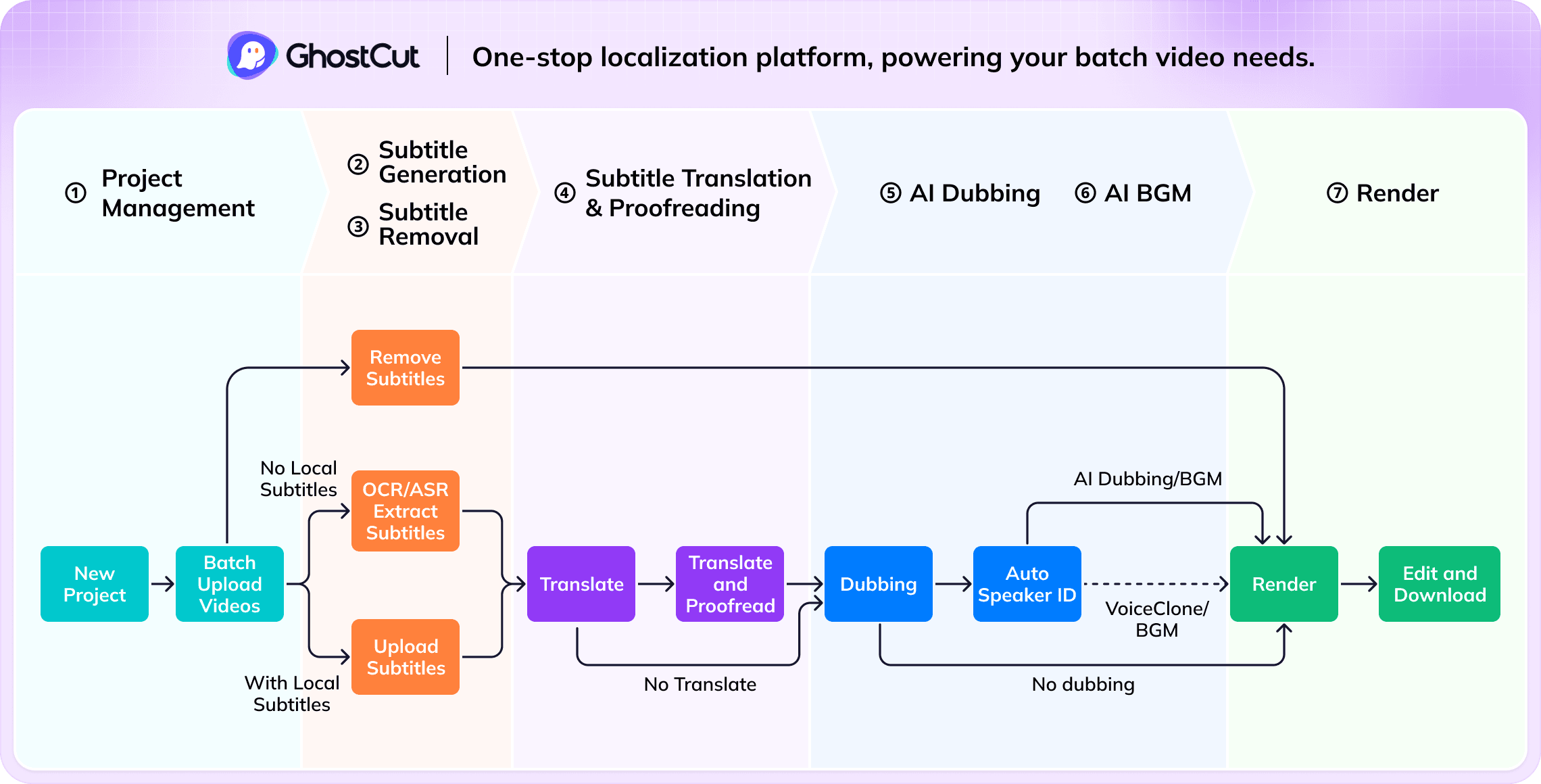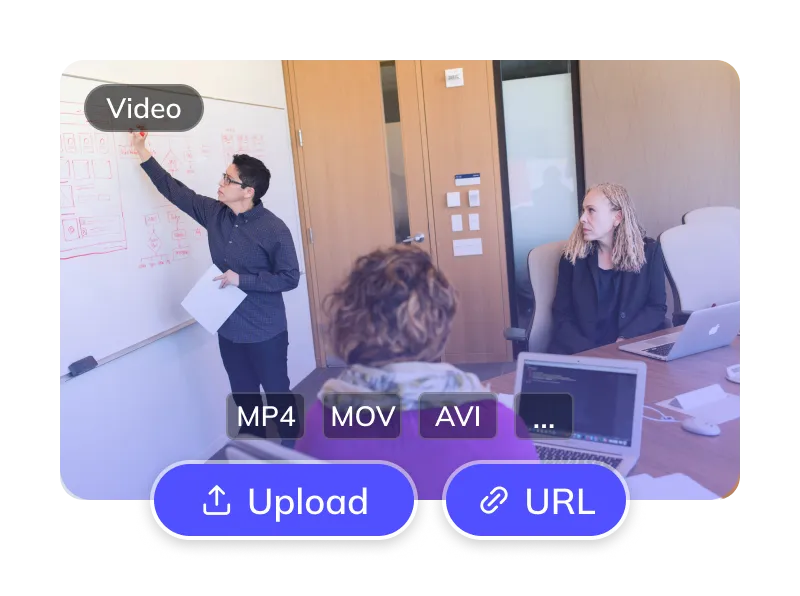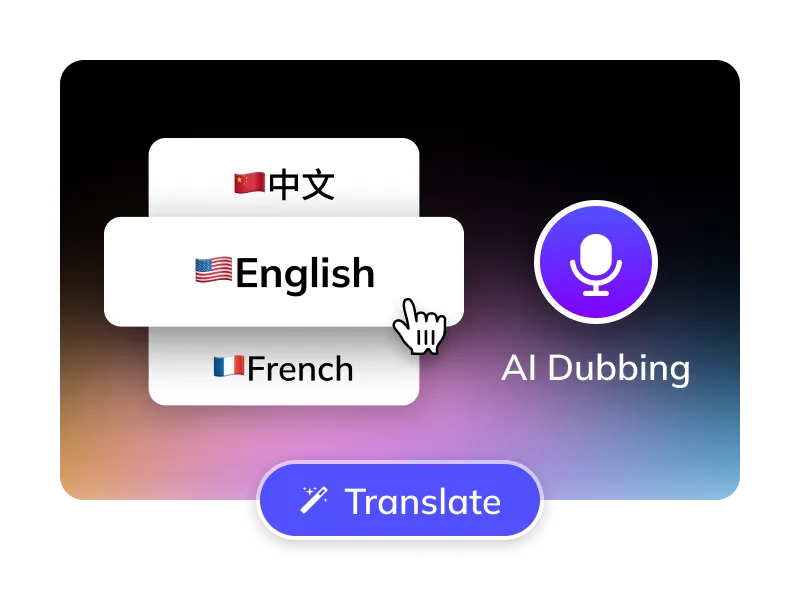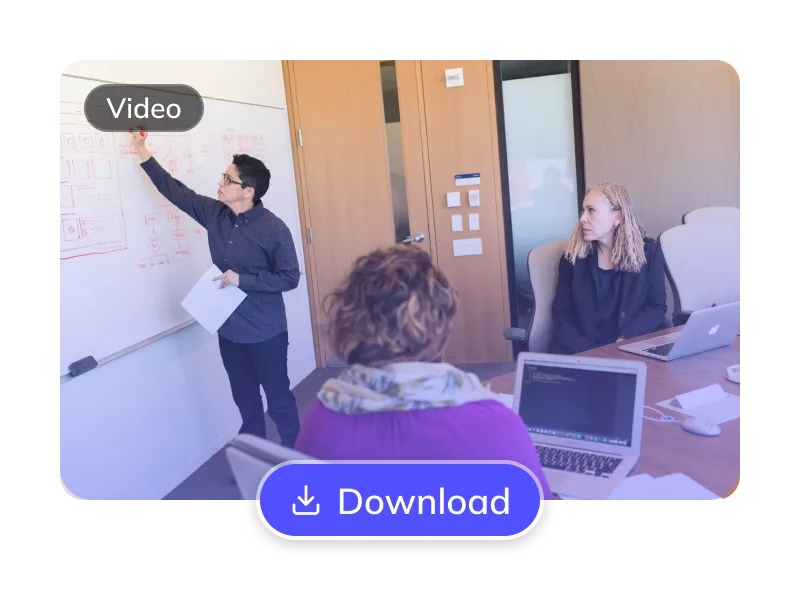How to Translate YouTube Videos to English ?
Translate YouTube Videos to Traditional-Chinese in 3 Easy Steps
Trusted by 1,500,000+ Global Creators and Businesses
Why GhostCut for Your Video Translations?
GhostCut is your all-in-one AI solution for translating YouTube content into natural, engaging Traditional-Chinese.
Effortless Project Management
Manage YouTube assets, subtitles, & Traditional-Chinese videos. Batch process projects efficiently.
Pinpoint Traditional-Chinese Accuracy
Up to 99.5% accurate. Optimized for YouTube-to-Traditional-Chinese with LLM calibration & multi-agent review for culturally fluent Traditional-Chinese translations.
Lifelike Traditional-Chinese AI Dubbing
Choose from diverse, human-like Traditional-Chinese AI voices (US/UK accents). Emotion-cloning technology captures original tone for natural Traditional-Chinese delivery.
Flexible YouTube Subtitle Options
Optionally erase original YouTube hardsubs for a clean slate. Translate embedded YouTube subtitles directly.
Smart Multi-Speaker ID (YouTube)
AI detects multiple speakers in YouTube videos. Assign or clone distinct Traditional-Chinese voices per character, with cross-episode consistency for complex Traditional-Chinese dubs (dramas, interviews).
Efficient Batch Processing & API
Batch translate and dub 100s of YouTube videos to Traditional-Chinese at once. Seamlessly integrate with our robust API.
Versatile BGM Control
Keep or mute original BGM. Our unique tech can also isolate sound effects, meeting diverse copyright and distribution needs.
Unbeatable Value
Flexible YouTube-to-Traditional-Chinese plans. Try core features free. Automated pro service from just $0.1/minute.
Easy Online Access
No downloads. Instantly translate YouTube videos to Traditional-Chinese online. Works on Windows, Mac, & major mobile browsers for cloud processing anywhere.
The GhostCut Edge: Unmatched Accuracy, Speed, and Value.
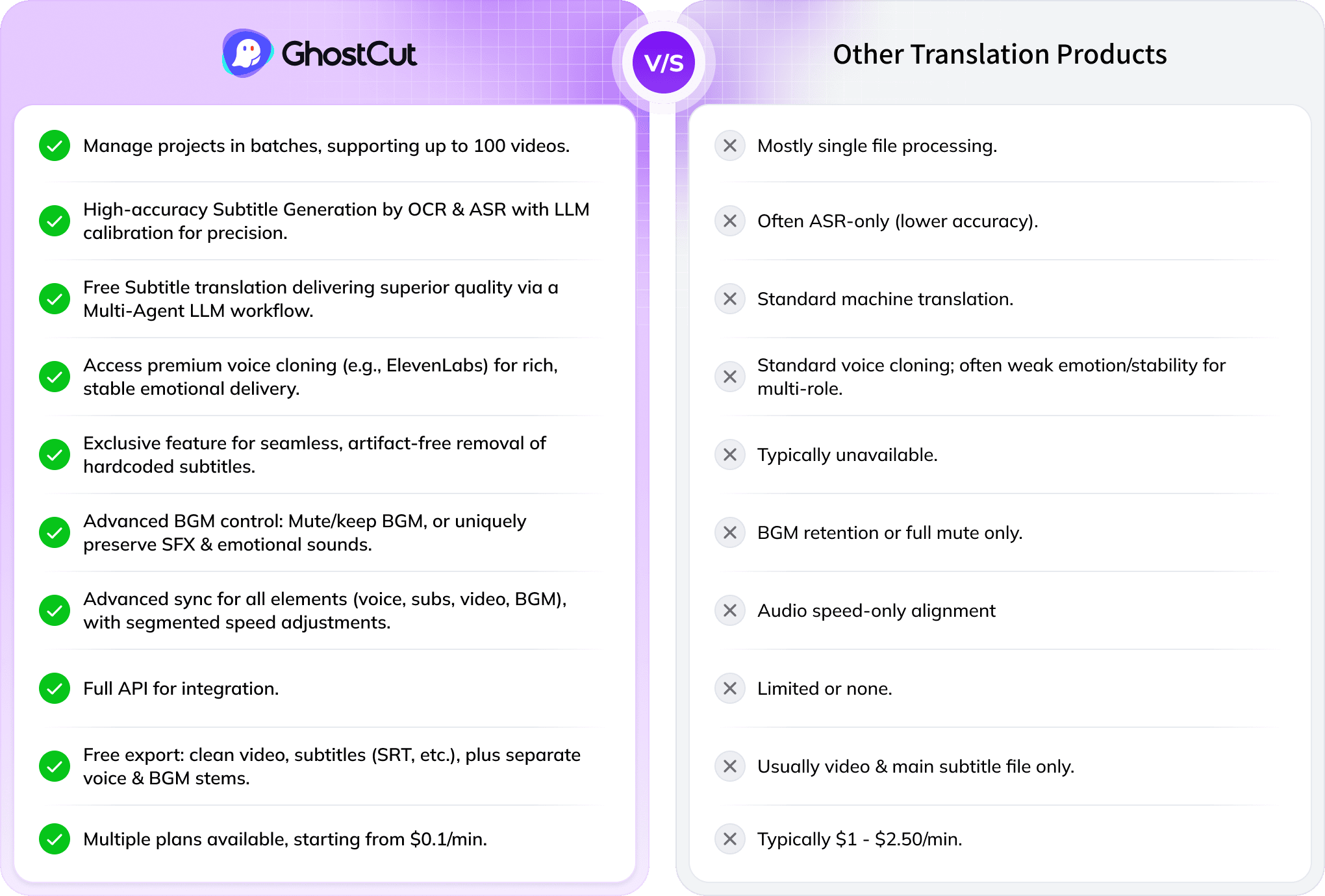
Every Algorithmic Optimization, Engineered for Quality Traditional-Chinese Video
Mastering Long-Form YouTube Drama & Multi-Character Dubbing
Translating a 100-minute YouTube drama with 4000+ lines and many characters into Traditional-Chinese is tough. Standard AI struggles to tell speakers apart, causing errors. GhostCut’s multi-modal AI (video, voice, text) excels in long-form, multi-speaker content, ensuring accurate, consistent character voices across entire series.
Translate Now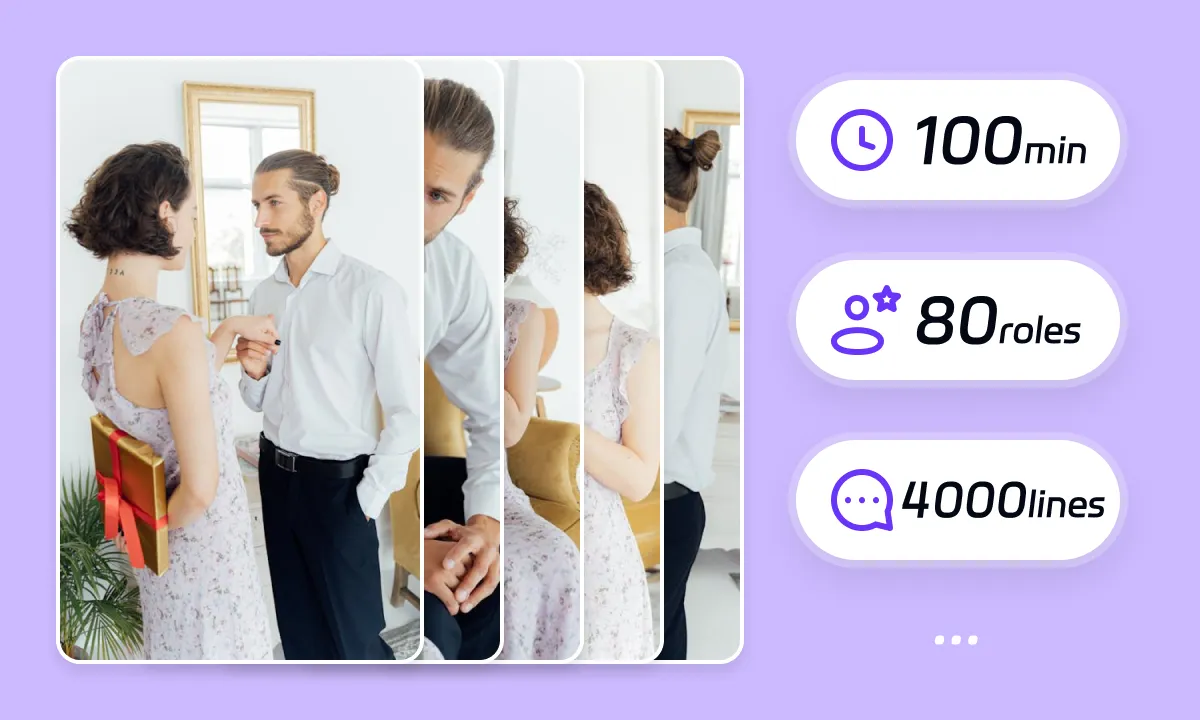
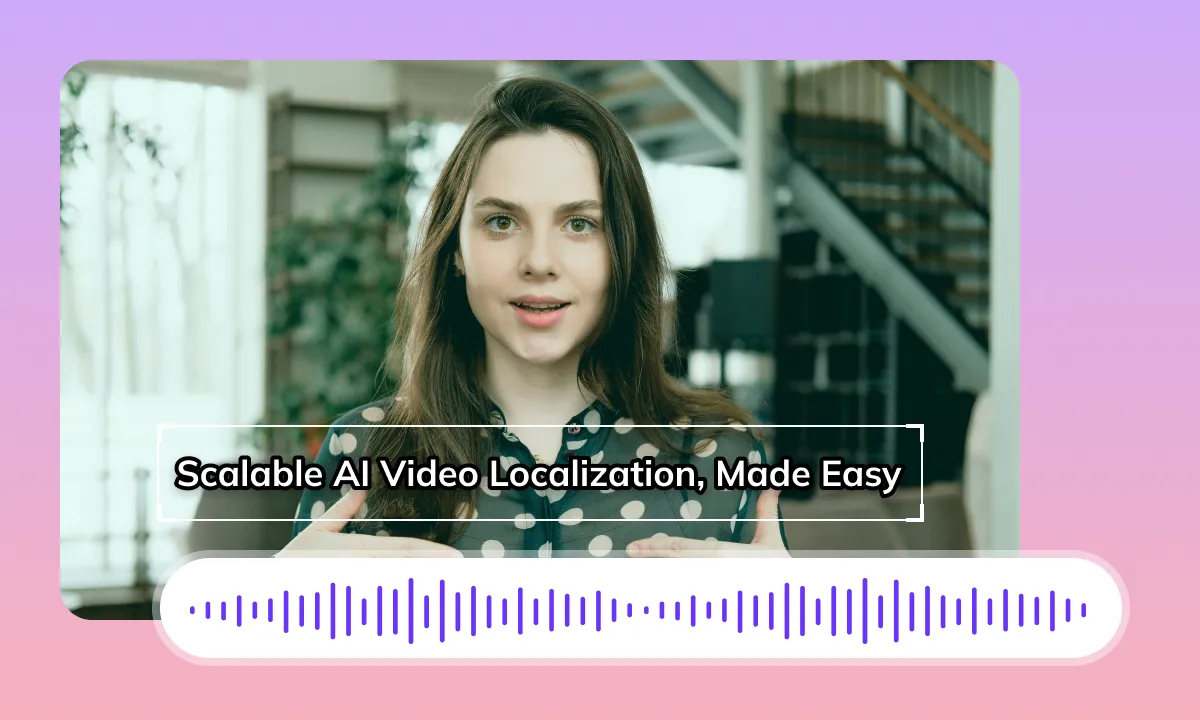
Seamless Traditional-Chinese Dubbing & Perfect Lip-Sync
GhostCut ensures natural Traditional-Chinese audio flow by treating related subtitles as whole ideas for TTS. It then precisely times new Traditional-Chinese subtitles. Since YouTube-to-Traditional-Chinese translation can change speech length, our AI expertly adjusts the new Traditional-Chinese audio, subtitles, video, and BGM to maintain perfect sync, just like a seasoned editor.
Translate NowBoost ROI with Flawless YouTube Subtitle Removal
Original YouTube hardsubs can limit your video's global appeal. GhostCut’s AI doesn't just blur; it intelligently reconstructs the background obscured by YouTube subtitles, even complex ones, for a perfectly clean, high-quality visual. This means better viewer engagement, longer watch times, and higher ROI.
Translate Now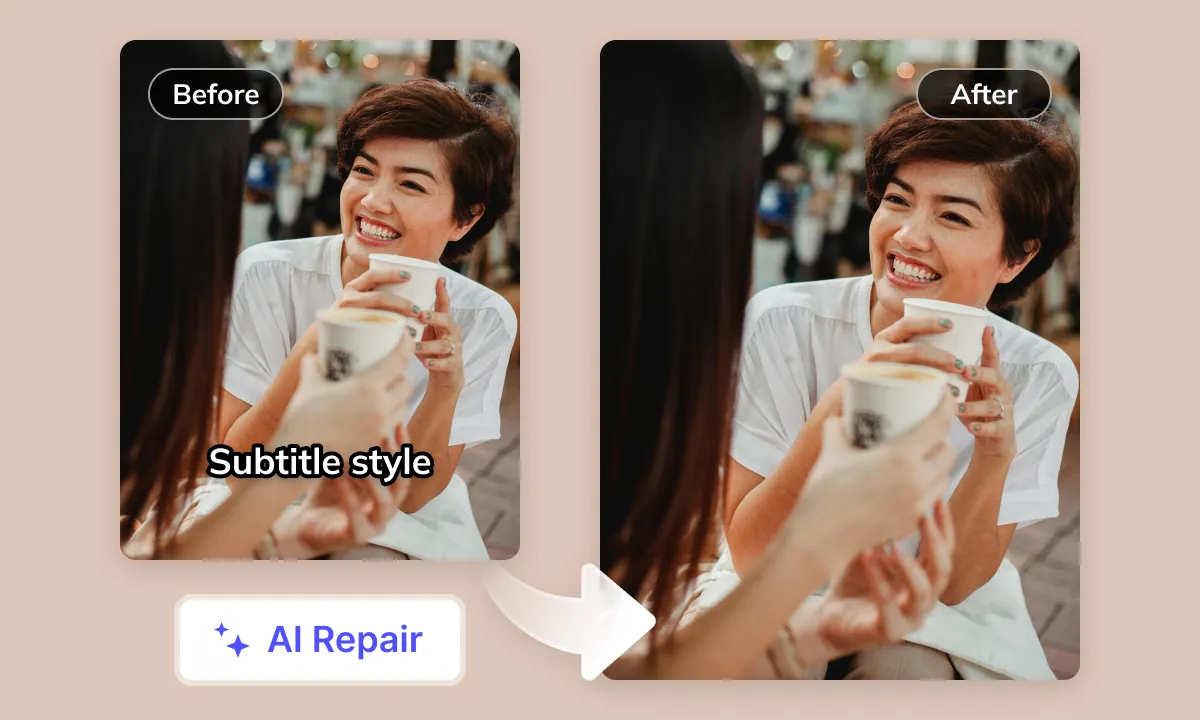
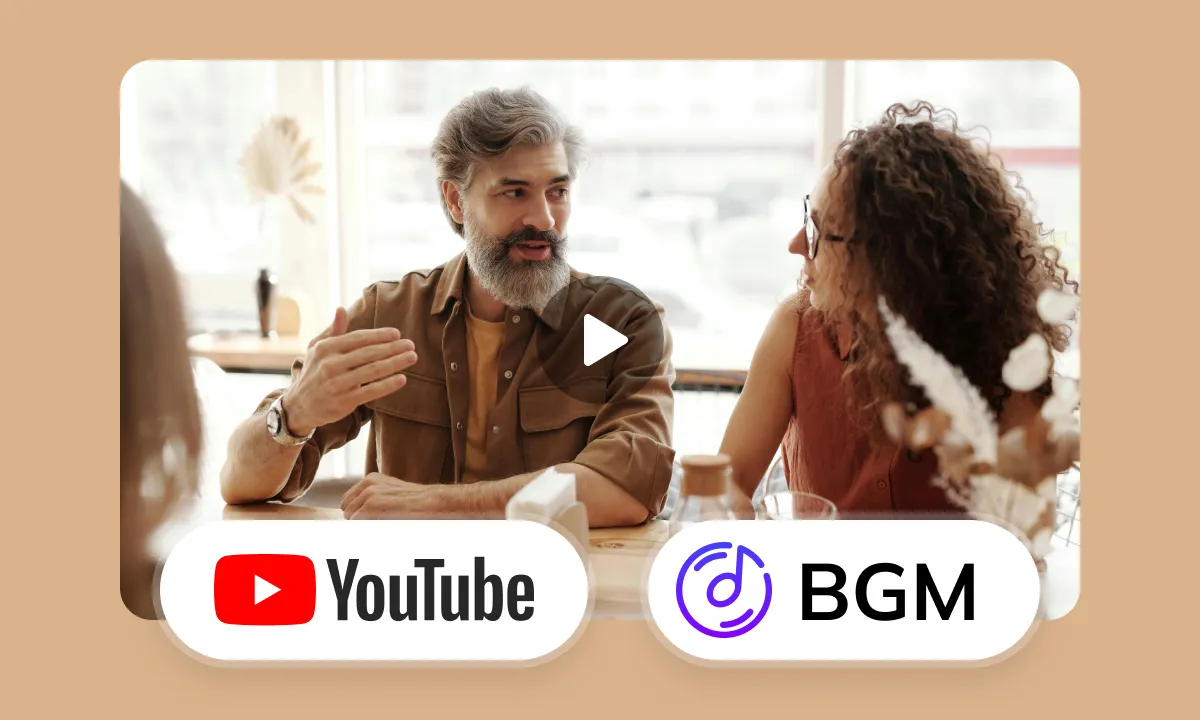
Smart Audio Control for YouTube Creators
Navigating BGM copyright on YouTube is tricky. GhostCut’s advanced audio separation isolates YouTube dialogue for translation, while intelligently managing BGM, sound effects, and even emotional expressions. Our "Keep SFX, Remove Music" option is a creator favorite for avoiding copyright issues without losing your video’s impact.
Translate NowYour YouTube Videos Deserve Global Traditional Chinese Viewers
Regardless of content typevlogs, tutorials, entertainment, or shortslanguage barriers significantly limit your YouTube videos' reach in the vast Traditional Chinese market. On global platforms like YouTube, videos without high-quality Traditional Chinese translation and voiceover become difficult for Traditional Chinese users to comprehend. This severely impacts their viewing experience, engagement, and your video's international influence. Therefore, there's an urgent market demand for professional, efficient AI video translation and voiceover solutions to effortlessly convert any YouTube video content into high-quality Traditional Chinese
YouTube Video Translation to Traditional Chinese: Challenges Insights
Embedded Content Interference
YouTube videos may contain embedded original language subtitles or significant background noise. If not properly managed (e.g., removal or masking), these elements can negatively impact the viewing experience for Traditional Chinese audiences
Cultural and Linguistic Discrepancies
Significant discrepancies exist between the cultural references, internet slang, idiomatic expressions, and contexts in the source language of YouTube videos (e.g., English) and those familiar to Traditional Chinese users. Literal translation often fails to convey the original meaning or leads to misunderstandings. The core challenge is integrating localized expressions while maintaining translation accuracy
Subtitle Format Alignment
Source language subtitles (e.g., English) may have different sentence breaks, line lengths, and information presentation methods than what Traditional Chinese audiences are accustomed to. When translating, it's crucial to reconsider layout, balance information density with screen space, and ensure subtitles are legible and aligned with the video's pace
Speech Pace Rhythm Adaptation
YouTube videos vary in speech pace and information density. After translation into Traditional Chinese text or generating voice-overs, the content's presentation speed and length may change, challenging audio-visual synchronization with the original footage
AI Speech Recognition Accuracy
Complex background noise, diverse accents, rapid dialogue, domain-specific terminology, or non-standard pronunciations can all compromise the accuracy of AI speech recognition for YouTube video source languages, subsequently affecting translation quality
Traditional Chinese AI Voice Tone Matching
While various Traditional Chinese AI voice tones are available on the market, finding high-quality AI voice-overs that are natural, fluent, emotionally rich, and perfectly match the original style and emotion of YouTube videos remains challenging
Perceptual Lip-Sync Alignment
Different languages have distinct pronunciation methods, leading to significant lip movement variations. Achieving 'perceptual lip-sync' between the dubbed voice and the original on-screen character's mouth movements after adding a Traditional Chinese audio track to YouTube videos is a severe challenge for current technology, particularly noticeable in close-up shots
Standard for Optimal AI Translation Workflow
An optimal AI translation workflow should encompass: accurate source language speech recognition (noise resilience, diverse accent comprehension) - generation of idiomatic Traditional Chinese translations (aligning with local internet culture, accounting for cultural and linguistic nuances) - provision of high-quality Traditional Chinese AI voice-overs (harmonizing with visuals, adapting to video pace) - ultimately achieving precise audio-visual content alignment
Tackling Video Translation Challenges with AI Empowering your YouTube content for any worldwide scenario.
Your All-in-One AI Translation Studio
GhostCut offers more than just YouTube-to-Traditional-Chinese translation. It's a complete AI-powered workflow: subtitle extraction 、 removal 、 translation and proofreading to multi-character dubbing , BGM processing, and final rendering. Go from YouTube source to global-ready videos, effortlessly.
